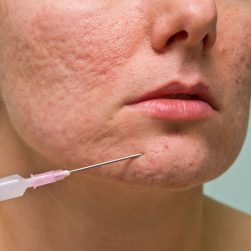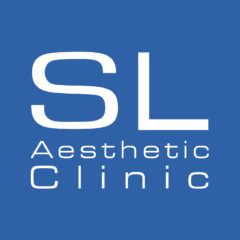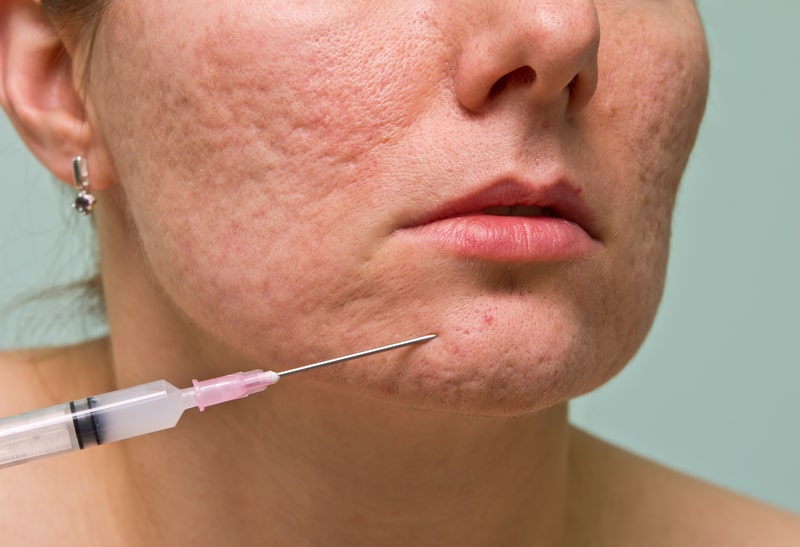Subcision

Disclaimer: Results, recovery, and risks vary by the individual.
The following information is meant as a guide only.
Subcision is an out-patient treatment of depressed acne scars. It can be combined with other treatments such as laser, derma roller and scar revisions for better results.
Subcision is a minor procedure that uses a needle that’s inserted underneath the skin surface. The depressed scar is then lifted by the releasing fibrous scar tissue tethering the scar downwards, as well as from connective tissue that forms during the course of normal wound healing.
Benefits of Subcision
- A technique that provides long-term improvement in the appearance of “rolling scars” of selected patients
- Can be combined with other treatments such as Fractional CO2 Laser and fillers for better results
Safety of Subcision
Subcision is a safe and minor procedure that has been used by medical professionals in the treatment of depressed scars.
FAQ
Subcision is a minor procedure that uses a tri-bevelled hypodermic needle. The needle is inserted through a puncture in the skin surface.
The needle is manoeuvred under the scar to make subcuticular cuts. This breaks the fibrotic strands which pull the scar to the underlying subcutaneous tissue. The depression is then lifted by the releasing action of this procedure, as well as from connective tissue that forms during the course of normal wound healing.
When performed by a medical professional, subcision is a safe and effective procedure in the treatment of depressed acne scars.
Subcision offers visible improvements in one treatment. Depending on the size of the lesion and patient recovery, repeat sessions are required after a 3 to 4-week interval for better cosmetic results. 3 to 6 visits should suffice for the majority of cases of moderate scarring.
Patients with many scars that need subcision will be required to stagger the treatment; a few scars may be treated at a time only.
After assessing your needs, the doctor can perform the treatment in approximately an hour or so, subject to the doctor’s schedule.
Upon completion of recommended course, results show excellent improvements. Results vary by the individual and lifestyle choices.
Subcision is performed under local anaesthesia. Pain is minimal. Minor discomfort is common post-procedure and can last for a few days. This can be relieved with a suitable pain medication. Pressure and ice are also applied after the procedure to reduce pain and bleeding.
The wound healing time can vary between a few days to a couple of weeks for larger areas or for those with multiple treatment sites. As with most procedures, bruising and bleeding can occur.
Subcision should preferably be done before a weekend or holiday for working patients.
Subcision is safe for most healthy adults. As with all medical procedures, you should be sure to disclose all of your medical history and current habits such as smoking and use of blood-thinners, medications, birth control pills, or supplements.
Subcision is unsuitable in the following circumstances:
- A history of hypertrophic or keloid scars
- On existing or recent (within 12 months) systemic oral retinoid (e.g., acitretin, isotretinoin)
- Bleeding or blood clotting disorders (coagulopathy)
- Active bacterial or viral infection.
Pre-care: Ensure that you’re in a good state of health and not recovering from a bacterial or viral infection.
Post-care: The treatment area(s) should be kept clean to avoid infection. Avoid prolonged exposure of the treatment area to sunlight.




